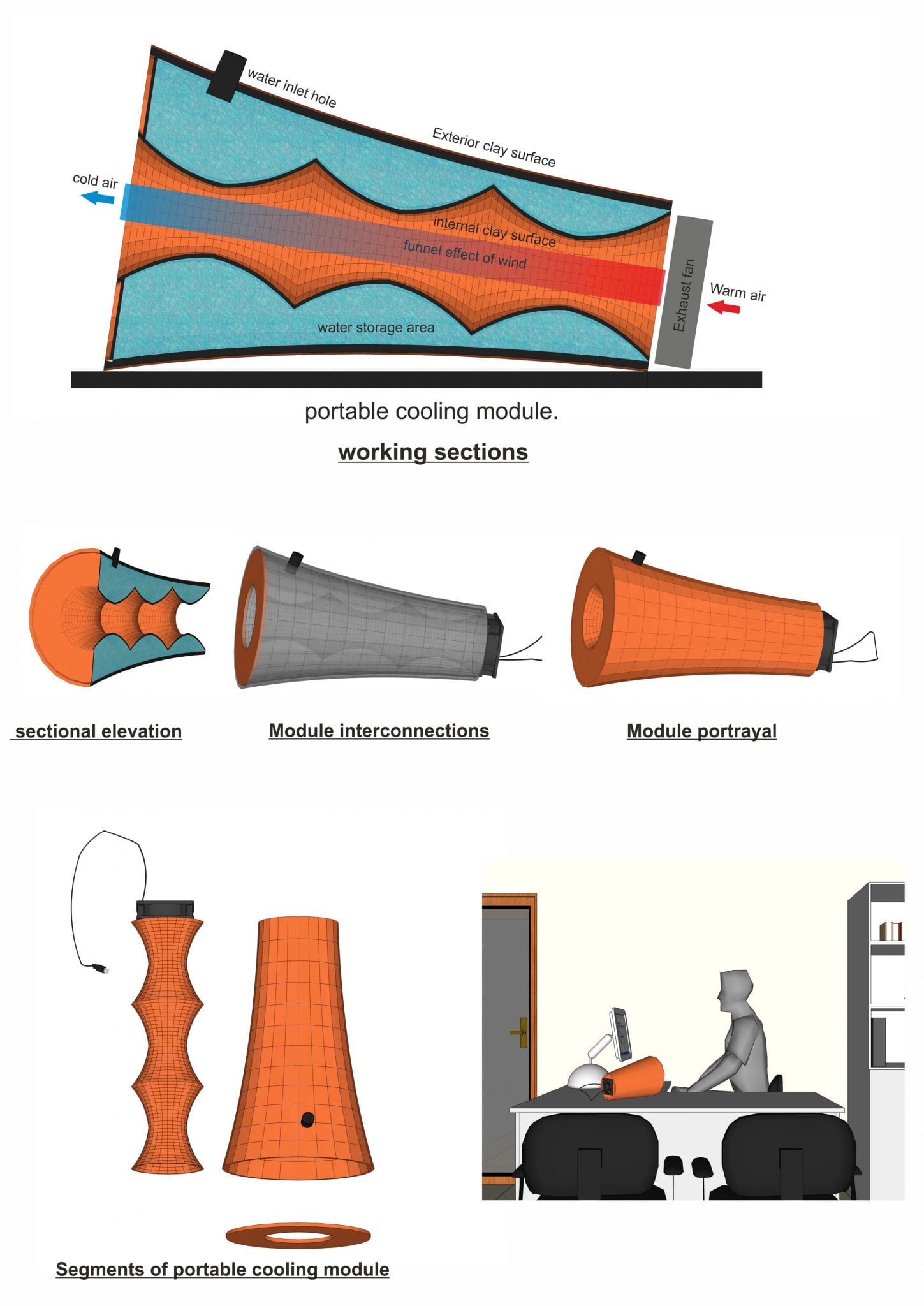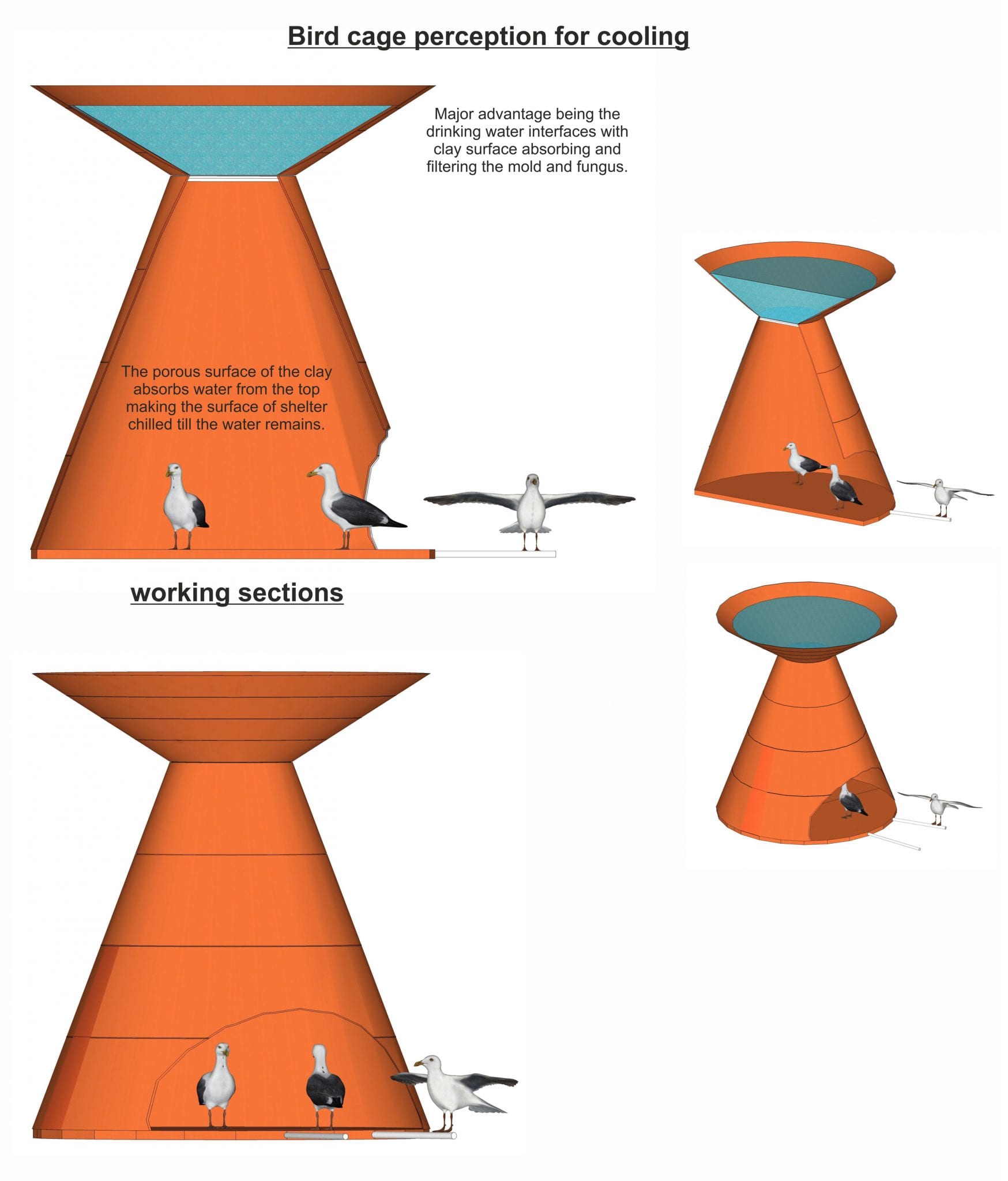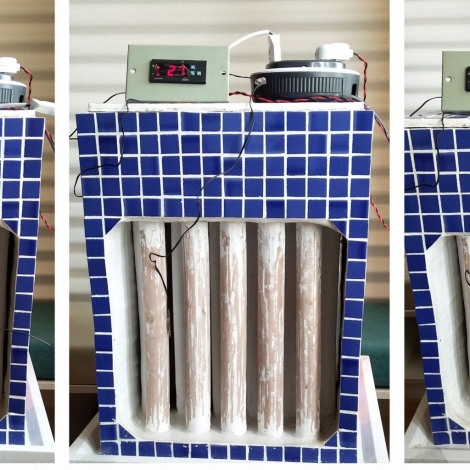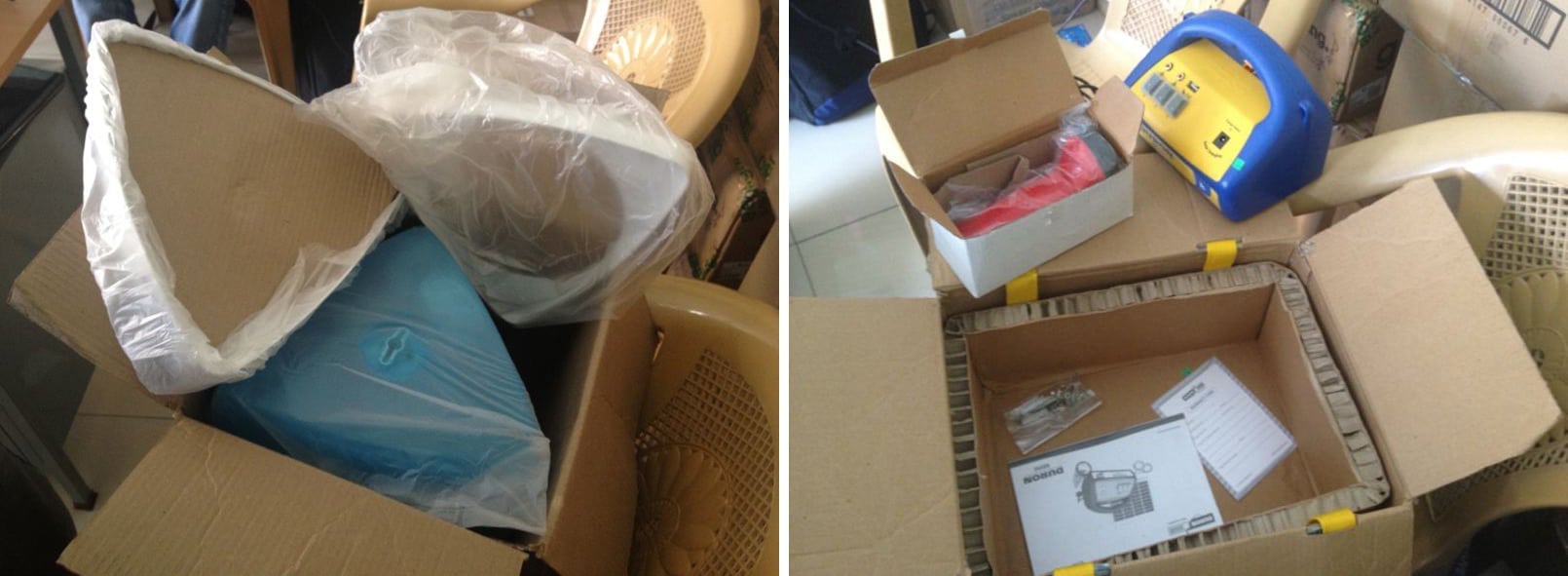Evaporative coolers have been known to purveyors of low-cost, sustainable technologies for years. Without the need for electricity, these cold containers have kept produce fresh from farms to tables, protecting against post-harvest losses in the field and food spoilage in hot pantries worldwide. Now the concept has been applied to air conditioning. Manoj Patel Design Studio in Vadodara, Gujarat (India) has built evaporative air conditioners that can cool a room for days on a single tank of water. The studio designs new products from recycled materials, and they built their air conditioners from ceramics and stone, integrating them with potted plants. By filling rows of ceramic tubes with water, the prototypes maximize their surface area for optimal evaporation while retaining a small footprint.
See evaporative food chillers and other cooling systems in Engineering for Change’s Solutions Library
In tests, the units maintain a temperature of 23°C (73°F) in a room temperature of 32°C (90°F). A tank on top holds 15 liters (4 gallons) of water that lasts for 10-12 days. The units can be made quickly and locally, Mr. Patel says, for a cost of roughly (INR) ₹800 (USD $10), which equates to less than two days’ wages for semi-skilled laborers in India.
Prototypes include two styles, one larger with a water level indicator and a self-watering system that trickles down from pots placed in a central cutout. The second is smaller, designed for portability and shaped like a cone on its side. A third version in the works will be a cooled cage for pet birds.
Mr. Patel plans to distribute the larger versions in his home state of Gujarat, where summer temperatures can reach a deadly 45°C (113°F)
“This cooling module will also be beneficial in remote areas with no electricity, along with open public passages (for example at bus stops, at railway stations), urban vendors (for example vegetable sellers, fruit sellers, etc), government sectors (for example hospitals, institutions, offices, etc. ). The placement of this designed cooling module in wind direction will result in significant cooling,” Mr. Patel says.
This is the Low-Cost Carbon-Free Cooling Module.











Hello, where can I find a construction manual to build this units?
Do you have any data to support the reduction in room temperature? It makes sense that the temperature in the cooler would be low, but it seems that room cooling would be limited without active flow.